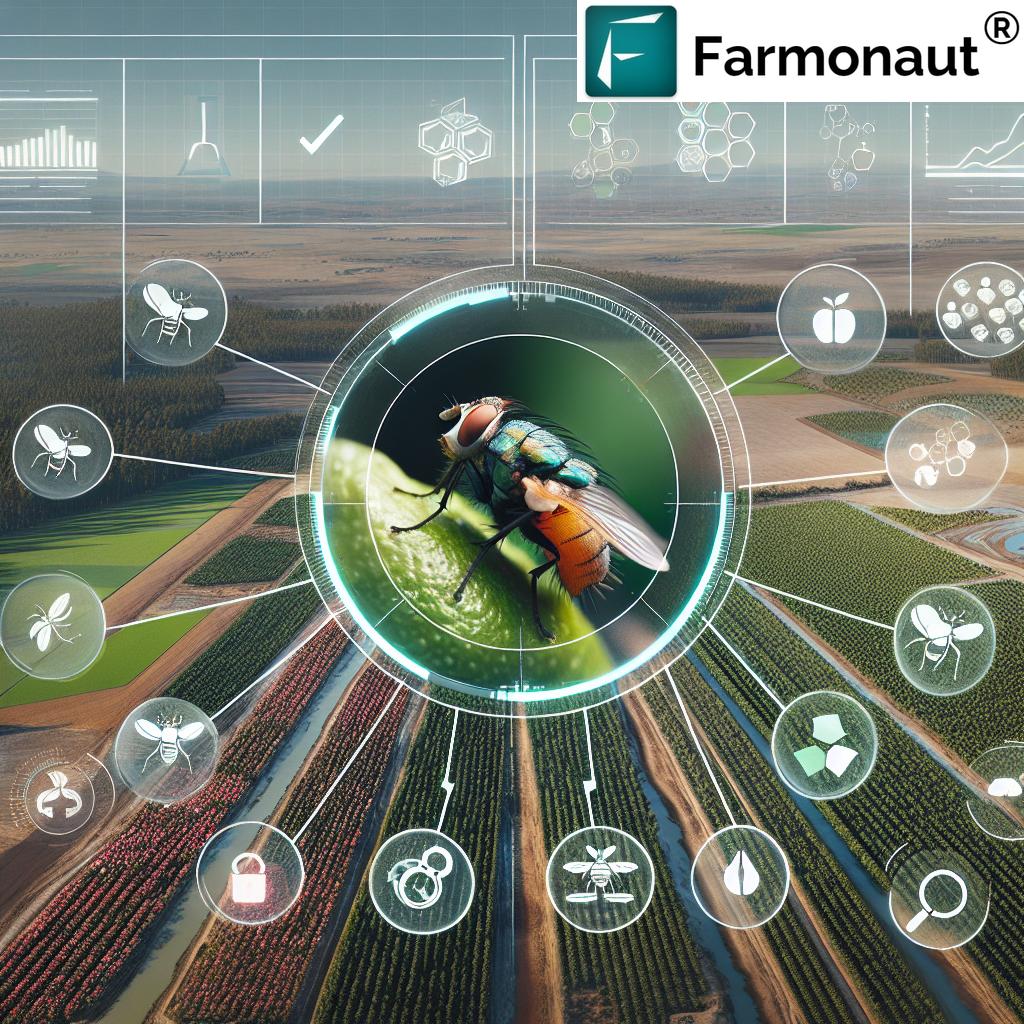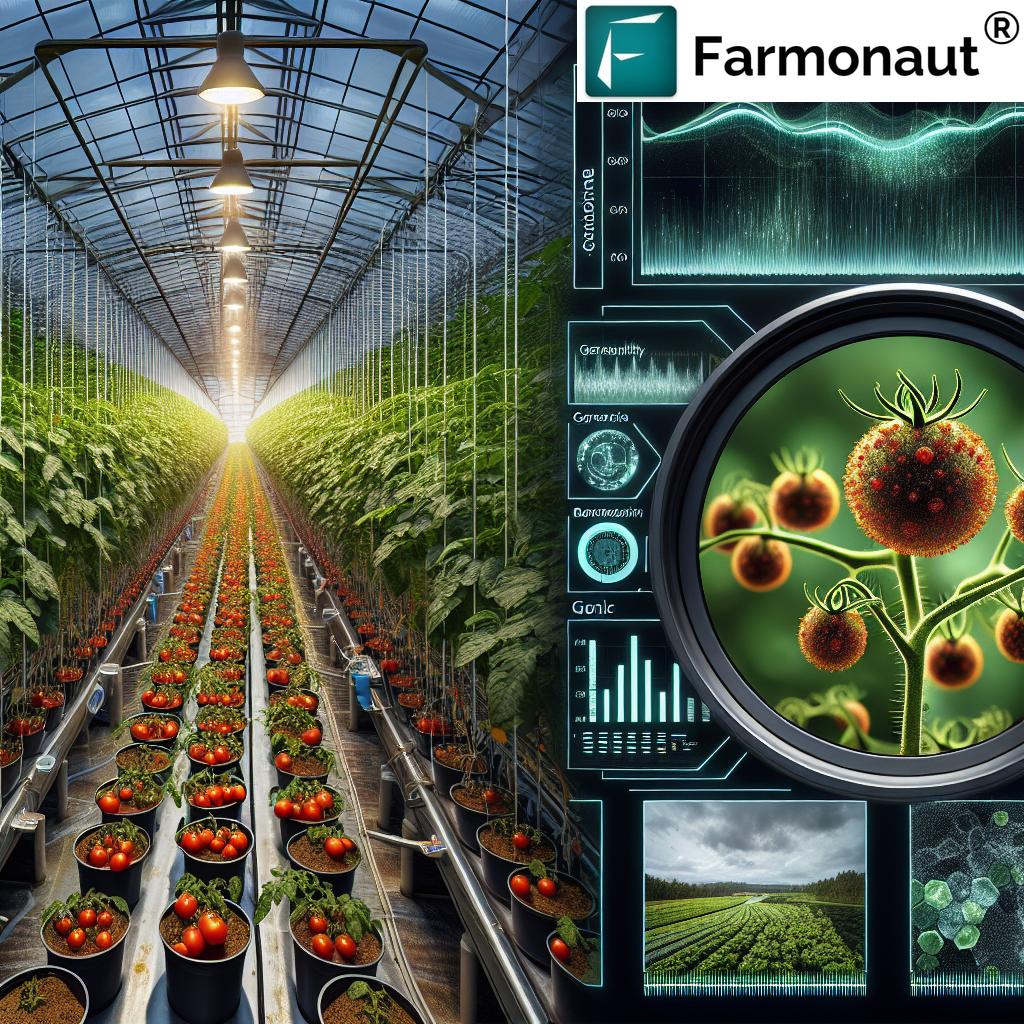Revolutionizing Plant Health Management: Australia’s Strategic Approach to Agricultural Biosecurity
“Australia’s plant biosecurity team integrates expertise from 3 key areas: plant industry operations, policy, and economics.”
In the vast expanses of Australia, from the sun-drenched fields of Queensland to the rugged landscapes of the Northern Territory, a silent revolution is taking place in the realm of plant health management and biosecurity in agriculture. As we delve into this critical aspect of our nation’s agricultural landscape, we uncover a world where strategic planning, industry partnerships, and cutting-edge technology converge to safeguard our crops and ecosystems.

At the heart of this revolution is a comprehensive approach to agricultural pest control and disease prevention that spans the entire continent. Our journey through Australia’s strategic approach to agricultural biosecurity will reveal how a skills-based team, armed with expertise in plant industry operations, policy, and economics, is driving innovative plant biosecurity practices across the nation.
The Foundation of Australia’s Plant Health Management Strategy
Australia’s approach to plant health management is built on a foundation of collaboration, innovation, and preparedness. Let’s explore the key components that make our strategy robust and effective:
- Industry Partnerships: Collaboration between government agencies, research institutions, and private sector entities forms the backbone of our biosecurity efforts.
- Emergency Pest Response Planning: Comprehensive protocols ensure rapid and effective action in the face of pest incursions.
- Innovative Training Programs: Continuous learning and skill development keep our biosecurity workforce at the cutting edge.
- Online Simulation Exercises: Virtual scenarios enhance preparedness for real-world pest management challenges.
These elements work in concert to create a dynamic and responsive system capable of addressing the ever-evolving challenges in plant health management.
The Strategic Approach to Agricultural Pest Control
Our strategy for agricultural pest control is multifaceted, combining proactive measures with rapid response capabilities. Here’s how we’re tackling this critical aspect of plant health:
- Early Detection Systems: Utilizing advanced surveillance technologies to identify pest threats before they become widespread.
- Integrated Pest Management (IPM): Implementing holistic approaches that minimize chemical interventions while maximizing pest control efficacy.
- Cross-Border Collaboration: Working with neighboring regions to create buffer zones and share intelligence on emerging pest threats.
- Community Engagement: Educating farmers and the public on pest identification and reporting procedures.
By adopting this comprehensive approach, we’re not just reacting to pest issues; we’re actively preventing them and minimizing their impact on our agricultural sector.
Innovative Training Programs: Cultivating Expertise in Plant Biosecurity
At the core of Australia’s plant biosecurity strategy lies a commitment to continuous learning and skill development. Our innovative training programs are designed to equip professionals with the knowledge and tools necessary to tackle complex biosecurity challenges. These programs encompass:
- Virtual Reality Simulations: Immersive training experiences that replicate real-world pest incursion scenarios.
- Cross-Disciplinary Workshops: Bringing together experts from various fields to foster holistic problem-solving approaches.
- International Exchange Programs: Facilitating knowledge transfer with global biosecurity leaders.
- Online Certification Courses: Accessible, up-to-date training modules for ongoing professional development.
By investing in our human capital, we ensure that Australia remains at the forefront of plant health management practices globally.
The Role of Technology in Plant Health Management
Technology plays a pivotal role in modernizing our approach to plant health management. From satellite imagery to artificial intelligence, we’re leveraging cutting-edge tools to enhance our biosecurity measures:
- Remote Sensing: Utilizing satellite data for early detection of crop stress and potential pest infestations.
- AI-Powered Diagnostics: Implementing machine learning algorithms for rapid and accurate pest identification.
- Blockchain for Traceability: Enhancing supply chain transparency to prevent the spread of plant diseases.
- IoT Sensors: Deploying networked devices for real-time monitoring of environmental conditions conducive to pest proliferation.
In this technological landscape, platforms like Farmonaut are making significant contributions. Farmonaut’s advanced remote sensing technology complements our national efforts by offering precision agriculture solutions for early pest detection and crop health monitoring.
Explore Farmonaut’s cutting-edge solutions for precision agriculture and crop monitoring.
Emergency Pest Response Planning: A Cornerstone of Biosecurity
Our emergency pest response planning is a critical component of Australia’s biosecurity strategy. This comprehensive framework ensures that we’re always prepared to act swiftly and decisively in the face of pest incursions. Key elements include:
- Rapid Assessment Teams: Specialized units ready for immediate deployment to assess and contain potential threats.
- Scalable Response Protocols: Flexible plans that can be adapted to the scope and severity of each unique situation.
- Interagency Coordination: Seamless collaboration between federal, state, and local authorities for unified action.
- Resource Mobilization Strategies: Pre-established pathways for quick allocation of personnel, equipment, and funds.
This proactive stance on emergency response significantly reduces the potential impact of pest incursions on our agricultural sector.

Financial Planning and Reimbursement Strategies in Pest Management
Effective financial planning is crucial for sustaining our biosecurity efforts. We’ve implemented robust strategies to ensure that resources are available when needed and that stakeholders are supported in their pest management activities:
- Emergency Response Funds: Dedicated financial reserves for rapid mobilization during pest incursions.
- Cost-Sharing Agreements: Partnerships between government and industry to distribute the financial burden of pest management.
- Reimbursement Programs: Frameworks to compensate farmers for losses incurred due to mandated pest control measures.
- Investment in Prevention: Allocating resources to proactive measures that reduce the likelihood of costly pest outbreaks.
These financial strategies ensure that our biosecurity system remains resilient and capable of addressing both immediate threats and long-term challenges.
Operational Processes: The Backbone of Biosecurity Implementation
The operational processes that underpin our biosecurity efforts are designed for efficiency, adaptability, and continuous improvement. These processes encompass:
- Risk Assessment Protocols: Systematic evaluations of potential pest threats and their potential impacts.
- Quarantine Procedures: Stringent measures to prevent the introduction and spread of pests across borders.
- Surveillance Networks: Comprehensive systems for monitoring pest populations and disease outbreaks.
- Data Management Systems: Robust platforms for collecting, analyzing, and sharing biosecurity information.
By continually refining these operational processes, we ensure that our biosecurity measures remain effective in the face of evolving challenges.
Domestic and International Trends Shaping Agricultural Biosecurity
Our approach to plant health management is constantly evolving in response to both domestic and international trends. Key factors influencing our strategies include:
- Climate Change: Adapting to shifting pest distributions and new environmental pressures.
- Global Trade: Enhancing biosecurity measures in response to increased movement of goods and materials.
- Technological Advancements: Incorporating new tools and methodologies for pest detection and management.
- Changing Consumer Preferences: Addressing the demand for sustainable and pesticide-free agricultural practices.
By staying attuned to these trends, we ensure that our biosecurity practices remain relevant and effective in a rapidly changing world.
“Over 70% of Australia’s land mass, from Queensland to Northern Territory, is covered by strategic agricultural biosecurity planning.”
The Role of Industry Partnerships in Fortifying Plant Health
Collaboration between government agencies, research institutions, and private sector entities is a cornerstone of Australia’s approach to plant health management. These partnerships drive innovation, share resources, and ensure a unified front against biosecurity threats. Key aspects of our industry partnerships include:
- Joint Research Initiatives: Collaborative projects that leverage diverse expertise to tackle complex biosecurity challenges.
- Information Sharing Platforms: Systems that facilitate rapid dissemination of critical biosecurity data across sectors.
- Public-Private Advisory Boards: Forums that bring together stakeholders to shape policy and strategic direction.
- Co-funded Biosecurity Programs: Initiatives that pool resources from government and industry to enhance our national biosecurity capabilities.
These partnerships not only strengthen our biosecurity measures but also foster a culture of shared responsibility in protecting Australia’s plant health.
Explore Farmonaut’s API for integrating advanced agricultural data into your systems.
The Future of Plant Biosecurity in Australia
As we look to the future, Australia’s plant biosecurity landscape is poised for continued evolution and enhancement. Key areas of focus include:
- Predictive Modeling: Developing sophisticated forecasting tools to anticipate and prepare for future biosecurity threats.
- Genome Editing Technologies: Exploring the potential of CRISPR and other genetic tools in creating pest-resistant crop varieties.
- Autonomous Surveillance Systems: Deploying self-operating drones and robots for continuous monitoring of agricultural areas.
- International Biosecurity Alliances: Strengthening global partnerships to create a more robust, interconnected biosecurity network.
These forward-looking initiatives will ensure that Australia remains at the forefront of plant health management and biosecurity practices globally.
Leveraging Technology for Enhanced Plant Health Monitoring
In the digital age, technology plays a crucial role in revolutionizing plant health management. Australia is at the forefront of adopting innovative solutions to enhance our biosecurity measures. One such technology making waves in the agricultural sector is Farmonaut’s advanced remote sensing platform.
Farmonaut’s cutting-edge technology offers precision agriculture solutions that complement our national biosecurity efforts. By utilizing satellite imagery and AI-driven analytics, Farmonaut provides farmers and biosecurity professionals with invaluable insights into crop health, pest infestations, and disease outbreaks.
Access Farmonaut’s API Developer Docs for detailed integration guidelines.
Key features of Farmonaut’s technology that enhance our plant health management include:
- Real-time Crop Monitoring: Satellite imagery provides up-to-date information on crop health across vast areas.
- Early Detection of Anomalies: AI algorithms identify potential pest or disease issues before they become visible to the naked eye.
- Historical Data Analysis: Trend analysis helps predict and prevent recurring biosecurity threats.
- Resource Optimization: Precision agriculture techniques reduce the need for broad-spectrum pesticide application, promoting more sustainable farming practices.
By integrating technologies like Farmonaut into our biosecurity framework, we’re enhancing our ability to protect Australia’s agricultural assets and ensure food security for future generations.
Australian Agricultural Biosecurity Initiatives
| Initiative Name | Implementing Agency | Focus Area | Key Outcomes |
|---|---|---|---|
| Emergency Pest Response Planning | Department of Agriculture, Water and the Environment | Rapid Response to Pest Incursions | Enhanced preparedness and reduced impact of pest outbreaks |
| Online Simulation Exercises | Plant Health Australia | Skills Development and Preparedness | Improved decision-making capabilities in biosecurity emergencies |
| Industry Partnership Programs | Various State Agricultural Departments | Collaborative Pest Management | Strengthened biosecurity networks and shared responsibility |
| National Plant Biosecurity Strategy | Plant Health Australia | Strategic Planning and Policy Development | Long-term vision and coordinated approach to plant health |
| Biosecurity Innovation Program | CSIRO | Research and Technology Development | Advanced tools and methods for pest detection and management |
Conclusion: A United Front for Plant Health
As we’ve explored throughout this comprehensive overview, Australia’s approach to plant health management and agricultural biosecurity is multi-faceted, innovative, and forward-thinking. From strategic planning and industry partnerships to cutting-edge technology and robust operational processes, every aspect of our biosecurity system is designed to protect our nation’s agricultural assets and ensure the sustainability of our food production.
The integration of advanced technologies, exemplified by platforms like Farmonaut, further enhances our capabilities in early detection, monitoring, and response to plant health threats. As we continue to face challenges such as climate change, increased global trade, and evolving pest pressures, our commitment to collaboration, innovation, and preparedness will be key to maintaining Australia’s position as a leader in plant biosecurity.
By fostering a culture of shared responsibility and continuous improvement, we are not just protecting our crops today, but safeguarding Australia’s agricultural future for generations to come. The journey towards revolutionizing plant health management is ongoing, and with each step, we strengthen our resilience and adaptability in the face of biosecurity challenges.
FAQ: Australia’s Agricultural Biosecurity
Q: What is agricultural biosecurity?
A: Agricultural biosecurity refers to the measures and practices implemented to protect crops, livestock, and ecosystems from pests, diseases, and other biological threats. It encompasses prevention, early detection, and rapid response strategies.
Q: How does Australia implement its biosecurity measures?
A: Australia implements biosecurity through a combination of strict border controls, surveillance programs, emergency response planning, industry partnerships, and advanced technologies for early detection and monitoring of potential threats.
Q: What role does technology play in Australia’s plant health management?
A: Technology plays a crucial role, including the use of satellite imagery, AI-driven analytics, and platforms like Farmonaut for precision agriculture. These tools enhance early detection of pests and diseases, optimize resource use, and improve overall crop health monitoring.
Q: How does Australia prepare for pest incursions?
A: Australia prepares through comprehensive emergency response plans, regular training and simulation exercises, maintaining rapid response teams, and fostering strong collaborations between government agencies, research institutions, and industry partners.
Q: What are the main challenges facing Australia’s agricultural biosecurity?
A: Key challenges include climate change impacts, increasing global trade, emerging pests and diseases, and the need for continuous innovation in detection and management strategies.
















